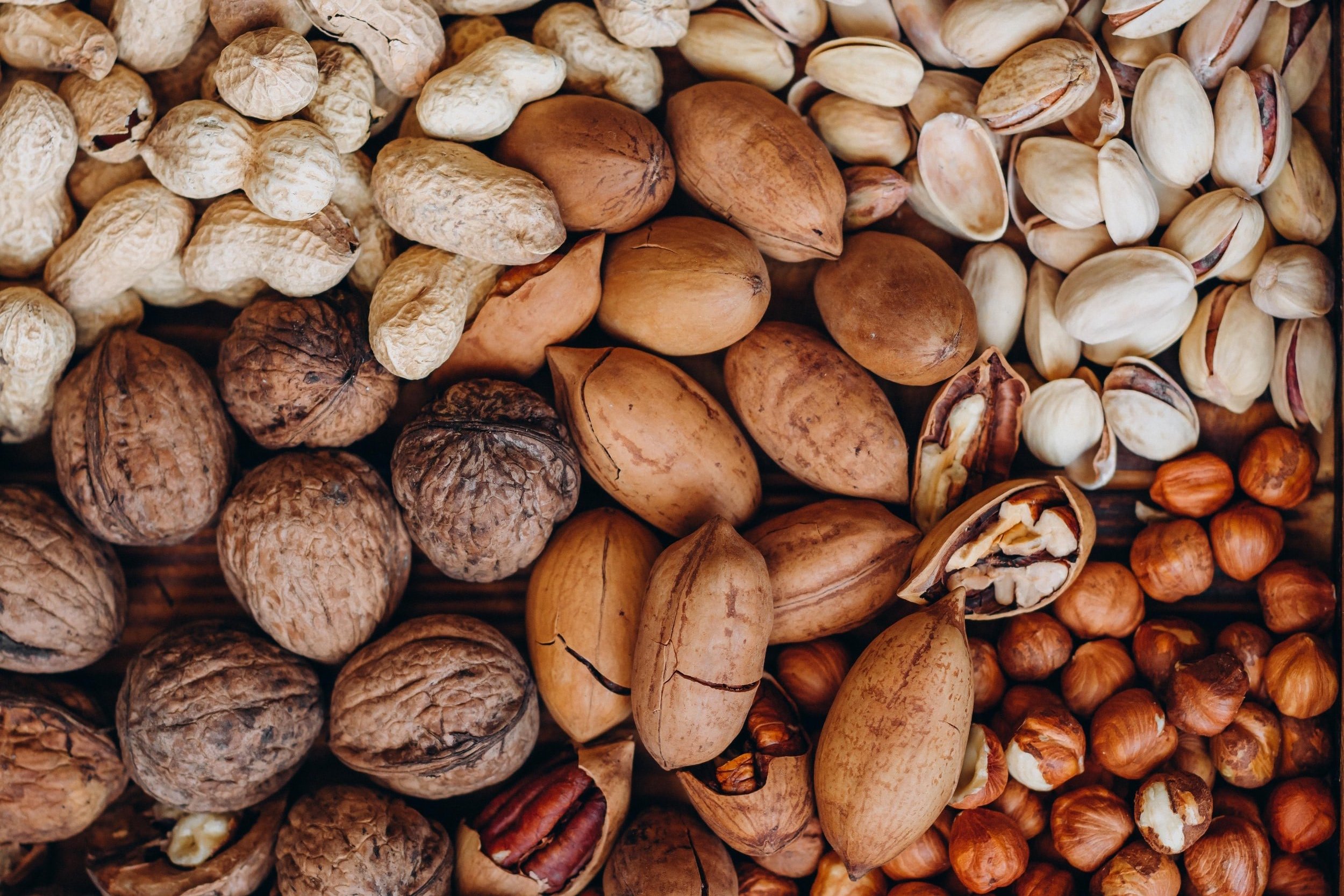
Protein
Protein in the diet comes from a variety of food sources and is usually served as the main entrée of the meal. Foods like meat, poultry, fish, and some plants are good sources of protein. This article will discuss the benefits of protein, starting with its chemical structure, the functions of protein within the body, and finally the sources and recommended daily intake of protein.
To start from the beginning, protein is made up of a chain of amino acids. There are 20 different classifications of amino acids, with nine of them being essential amino acids and the rest being nonessential amino acids. The amino acids that are classified as essential is due to the body being unable able to make them so, therefore, the only way the body obtains them is through the diet. Nonessential amino acids can be made in the body, but we also obtain them through the diet as well. In the body, amino acids can function independently or join to create a chain of amino acids and form various protein structures. The unique characteristic of proteins is that, unlike carbohydrates and fats, the amino acids within them contain one or more nitrogen molecules. This is significant since nitrogen is what makes life possible. Nitrogen is an essential building block of many structures within the body such as enzymes, hormones, neurotransmitters, and our DNA. Overall, protein is found throughout the body with roughly 40% being in the skeletal muscle, 25% in organs (1), and the remaining being found in the blood and skin and functions to help do the following (2–4):
- Maintain and build muscle
- Serve as enzymes and intermediates in many pathways
- Provide structure and integrity to cells and organs such as hair, skin, nails, and bones
- Improve body composition and integrity
Dietary sources of protein include both animal and plant products. The essential amino acids are primarily found in animal products, though obtaining essential amino acids through plant products is possible through protein contemplation (5) (combining two plant products to obtain an essential amino acid). Animal products would be meat, poultry, fish, eggs, and some dairy products. Plant products would include grains, legumes, nuts, seeds, and some vegetables. The recommended daily allowance (RDA) for people ranges from 0.8 – 1.0 g/kg body weight/day. However, this does not consider the activity level of a person so some people may even require up to 2.0 g/kg body weight/day (6). Since a serving of protein is approximately the size of your palm (7), you would need to consume 3-4 servings of protein per day to meet the RDA of 0.8 – 1.0 g/kg body weight/day or 6-8 servings of protein per day to meet the 2.0 g/kg body weight per day.
Written by: Siri Pederson
Last edited: 05/11/2022
-
Gropper S, Smith J, Carr T. Advanced Nutrition and Human Metabolism. 8th ed.; 2021.
Alberts B, Johnson A, Lewis J. Protein function. Molecular Biology of the Cell. 2002;4. https://www.ncbi.nlm.nih.gov/books/NBK26911/?_ga=2.209949973.149134003.1649866263-1450360983.1630966593&_gl=1*1svieq4*_ga*MTQ1MDM2MDk4My4xNjMwOTY2NTkz*_ga_7147EPK006*MTY0OTg2NjI2Mi40LjAuMTY0OTg2Njc1My4w*_ga_P1FPTH9PL4*MTY0OTg2NjI2Mi4xLjAuMTY0OTg2Njc1My4w. Accessed April 18, 2022.
Res P, Groen B, Pennings B, et al. Protein ingestion before sleep improves postexercise overnight recovery. Medicine and Science in Sports and Exercise. 2012;44(8):1560-1569. doi:10.1249/MSS.0b013e31824cc363.
Cermak N, Res P, de Groot L, Saris W, van Loon L. Protein supplementation augments the adaptive response of skeletal muscle to resistance-type exercise training: A meta-analysis. American Journal of Clinical Nutrition. 2012;96(6):1454-1464. doi:10.3945/ajcn.112.037556.
Staff A. Protein complementation. American Society for Nutrition. Published March 2011. https://nutrition.org/protein-complementation/ Accessed April 18, 2022.
Szedlak C, Robins A. Protein requirements for strength training. The Journal of Strength and Conditioning Research. 2012;34(5):85-91.
Andrews R. Forget calorie counting. Precision Nutrition. https://www.precisionnutrition.com/ calorie-control-guide. Accessed April 18, 2022.







